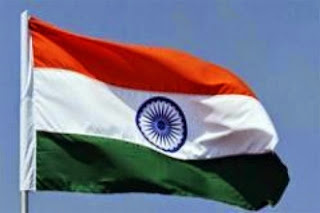New Delhi
It's advantage Chief Minister N Biren Singh in Manipur for the BJP.
The Lotus party's performance in Manipur will be vital from the perspective of
north east politics. In February-March 2023, three other northeastern states Meghalaya, Tripura and Nagaland are also slated to go for polls.
The BJP has put all eggs in one basket in Manipur.
Three MLAs, Y Erabot Singh, M. Rameshwar and P Sharatchandra resigned from the saffron party and there have been protest and burning of effigies by disgruntled party leaders and workers.
The saffron party leadership is still unfazed.
N Biren Singh joined BJP only in 2016 and since then there is no looking back for him.
In BJP central leadership's perception, Singh has earned the reputation of being an accessible Chief Minister.
His popularity and 'good performance' despite challenges in the last five years have given BJP a major
advantage in this year's polls, the high command thinks.
Now in the ticket distribution, the BJP decided to repose all faith in him and
thus also agreed to field the likes of SS Olish and Rajkumar Imo Singh.
Ms Olish has been fielded from Chandel while Imo Singh has been fielded from
Sagolband.
There was strong protest on Sunday after ticket distribution and even violence has been reported in Sagolband.
Imo Singh, a relative of the Chief Minister Biren Singh, joined BJP only in November 2021.
S S Olish is also known as a 'close associate' of Biren Singh and she has been fielded from
Chandel (ST) reserved constituency.
Five years back, the BJP nominee Olish had polled over 23 percent of vote share in 2017 and polled
9,842 votes to finish third in the race. Whether the saffron party has able to make further inroads in last
five years remains to be tested.
Chief Minister's outreach programmes ‘Go to Hills’ and ‘Go to Village’ have been widely accepted
and appreciated by the people in this development-starved state.
N Biren Singh also has an image of a 'protector' of Meitei interests. This gives him a big advantage in the
valleys that sends 40 MLAs.
The Prime Minister's concept of 'Double Engine' is at its display in its best form in this state.
To be in power both in Imphal and in Delhi is a great magnetic pull for votes in a state where like Nagaland
it is said when Delhi gets cold, Manipur politics sneezes.
Of course, this used to be the Congress advantage factor for decades and now that pattern is definitely
going to give a boost to the BJP campaign.
The decline in the long bandhs and blockades will also go in favour of the BJP, say party leaders. .
Modi's personal charisma will always give benefits to the BJP.
Among the projects inaugurated and launched by the Prime Minister on Jan 4 at Imphal is the
landmark Steel Bridge built over Barak River.
The project will fulfill the long awaited demands of the people and henceforth
the traffic congestion along the national highway 37 will be reduced.
This will ensure a seamless year round connectivity between Imphal and Silchar in the Cachar district of Assam.
The road link to Imphal at present is via Kohima in Nagaland and commuters and truckers
often are faced with different kinds of challenges.
When the Naga peace talks 'entered' the final and crucial stage on Oct 31, 2019, Home Minister Amit
Shah had ordered his ministry to issue a statement that 'no final word'
has been said or could be said until the states of Manipur, Assam and Arunachal Pradesh have been consulted.
Here came the role of BJP's 'first' Manipur Chief Minister N Biren Singh.
He had flown to Delhi and called on the Home Minister to give the 'right perspective' from the perspective.
In the BJP circle, it was quickly given out that Biren Singh enjoys good working relations with Amit Shah.
Now, the onus on this neo-saviour of Meitei interests, Biren Singh to deliver Manipur to the saffron party.
ends



























